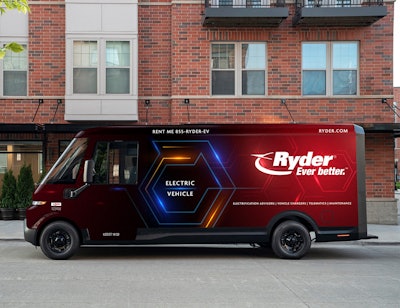
Based on representative network loads and routes from Ryder’s dedicated fleet operations in today’s market and other factors, data shows the annual total cost to transport (TCT) by electric vehicle (EV) vs. diesel is estimated to increase across the board – ranging from up to 5% for a light-duty transit van to as much as 114% for a heavy-duty tractor (depending on the geographic area).
And, for a mixed fleet of 25 light-, medium- and heavy duty vehicles, the analysis shows an increased TCT of up to 67% for an all-electric fleet.
“While Ryder is actively deploying EVs and charging infrastructure where it makes sense for customers today, we are not seeing significant adoption of this technology,” says Robert Sanchez, chairman and CEO of Ryder. “For many of our customers, the business case for converting to EV technology just isn’t there yet, given the limitations of the technology and lack of sufficient charging infrastructure. With regulations continuing to evolve, we wanted to better understand the potential impacts to businesses and consumers if companies were required to transition to EV in today’s market.”
Key takeaways:
- With evolving state and federal legal requirements aimed at transitioning fleets to zero-emission vehicles, Ryder customers frequently ask about the costs, benefits, and complexities of converting to electric.
- The study factors in the cost of the vehicle, maintenance, drivers, range, payload, and diesel fuel vs. electricity, while also accounting for EV charging time and equivalent delivery times. It also assumes the accessibility and use of the fastest applicable commercial vehicle chargers.
- First, Ryder conducted 1:1 comparisons for diesel and EV transit vans, straight trucks, and heavy-duty tractors, using cost assumptions from California, which typically has the highest fuel, electricity, and labor costs in the country, and in Georgia, where costs are generally lower.
- Second, as most companies have more than one vehicle, Ryder applied the individual costs to a fleet of 25 vehicles of mixed classes and types, and compared the cost of owning and operating that fleet in California and Georgia. The fleet mix is based on the overall mix of commercial vehicles in the United States, according to Polk Data Services, and includes 11 light-duty vans, four medium-duty straight trucks, and 10 heavy-duty tractors.
- Based on the TCT for a mixed EV fleet, and assuming companies pass the increased TCT on to consumers, Ryder estimates those increases could cumulatively add 0.5% to 1% to overall inflation.
“There are specific applications where EV adoption makes sense today, but the use cases are still limited. Yet we’re facing regulations aimed at accelerating broader EV adoption when the technology and infrastructure are still developing,” says Karen Jones, EVP and head of new product development for Ryder. “Until the gap in TCT for heavier duty vehicles is narrowed or closed, we cannot expect many companies to make the transition; and, if required to convert in today’s market, we face more supply chain disruptions, transportation cost increases, and additional inflationary pressure.”
“While mass adoption of EVs is not being required at this time, the purpose of this analysis was to quantify the gap in the total cost to transport goods with diesel vs. electric vehicles and to understand what it will take to make commercial EVs economically viable at scale,” adds Sanchez. “Today, it would require significant advancements in EV technology to improve range and payload, and according to at least one industry estimate, nearly $1 trillion in charging infrastructure and power grid upgrades. While EV technology is still evolving, we are evaluating multiple ways to reduce emissions, including electric, natural gas, hydrogen, hybrids, and carbon capture, as well as continuing to advance diesel emissions technology. When a new technology is ready for the market, it has been our experience that businesses will see the benefits and broader adoption will follow.”















![Pros To Know 2026 [color]](https://img.sdcexec.com/mindful/acbm/workspaces/default/uploads/2025/08/prostoknow-2026-color.mduFvhpgMk.png?ar=16%3A9&auto=format%2Ccompress&bg=fff&fill-color=fff&fit=fill&h=135&q=70&w=240)


